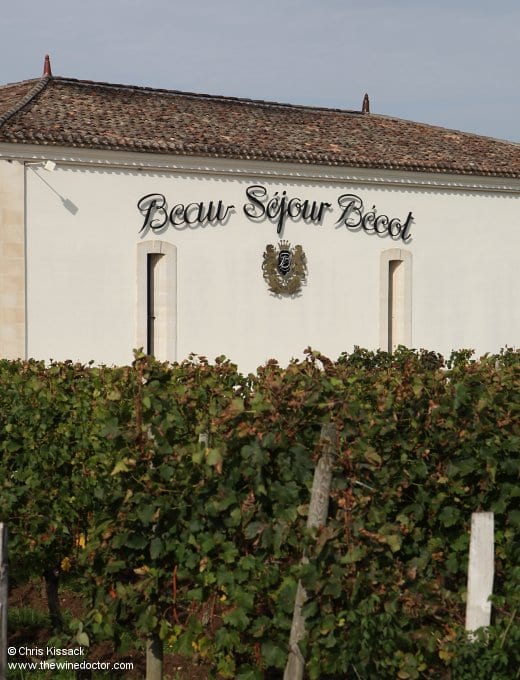Château Beau-Séjour Bécot
Although I recall first meeting Juliette Bécot back in 2006 it was several years later that I first visited Château Beau-Séjour Bécot. It was a miserable March day, the sky grey with a fine drizzle which permeated the air around the château and seemed to drift lazily through the vineyards. In front of me lay a sea of vines and yellow wild flowers, the latter at least lending a splash of colour to the scene, hinting at the tantalising joys of spring yet to come, providing a welcome contrast to the dreary weather. Beyond the vines lay the Romanesque church of St Martin de Mazerat and its extensive cemetery, a rather crowded enclosure crammed with every imaginable style of tomb, cross and gravestone. Some tombs were pristine, protected from the elements by little greenhouse-like affairs, whereas others have been worn by the years, the stones encrusted with lichen, the iron railings and crosses that surround these old graves coated with a deeply coloured layer of rust. As an ensemble, the church and gravestones make for an imposing sight.
This church and the Beau-Séjour Bécot estate are not neighbours by chance though; indeed, the latter owes its existence to the former, as do the other neighbouring châteaux, Château Canon and Château Beauséjour-Duffau-Lagarrosse. To understand how these four entities are related we need only to look back a few hundred years to the origin of the vineyards; you might not be surprised to learn that, as is the case with many vineyards, they started life tended by ecclesiastical hands.

